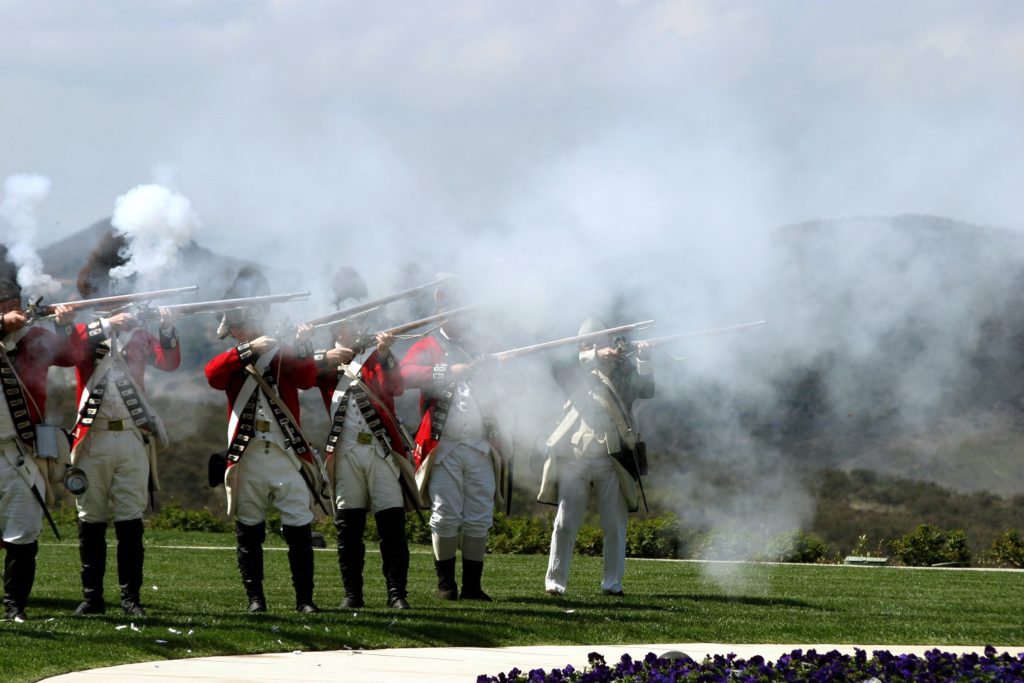
(Image courtesy of Adobe Stock.)
The vicious behavior of marauding Vikings is well known. Everyone knows they were violent brutes, totally unlike everyone else at the time.
Um, yeah.
This blog has pondered that issue, particularly by putting their violence in context of the harshly violent times in which they lived.
For a few more glimpses into the enlightened, benevolent, dignified, gentlemanly way the English have behaved every day of the last thousand years we can take a look into their behavior at the time of the American Revolutionary War, as described in The Indispensable’s: The Diverse Soldiers-Mariners Who Shaped the Country, Formed the Navy, and Rowed Washington Across the Delaware by Patrick O’Donnell.
Drawn and Quartered
I’ve previously mentioned that the gentlemanly English used the punishment of drawing and quartering during the Viking Age to deal with treason and other capital offenses.
The technique was still used by the civilized British around the time of the American Revolution, around 800 years later.
Book says the insurrection in Ireland shortly before the American uprising had been successfully suppressed by the British. The routine judgment for captured Irish revolutionaries was, to quote a judge at one sentencing:
“You are to be drawn on hurdles to the place of execution, where you are to be hanged by the neck, but not until you are dead, for while you are still living your bodies are to be taken down, your bowels torn out and burned before your faces, your heads then cut off, and your bodies are to be divided into four quarters.”
The Indispensable’s: The Diverse Soldiers-Mariners Who Shaped the Country, Formed the Navy, and Road Washington Across the Delaware location 4060 in Kindle edition.
Ah, yes.
Dragged to the gallows. Hung by the neck. But not until death. Slice open the abdomen to let the intestines fall out. Or pull them out. Roast said intestines over a fire while the person is still alive and conscious. After said cookout, chop off the person’s head. Then chop the remainder of the body into four parts. The head will be taken to the King to show the person was actually dead.
I think we can all agree to put drawing and quartering rather high on the barbarity scale. I suppose we can put it on the level as the supposed Viking blood eagle. That assumes that any blood eagles actually took place and is not just a misinterpretation of the soaring poetic descriptions favored by Vikings.
By the way, to put those signatures on the Declaration of Independence into perspective in terms of the risk each of the signers took, keep in mind the fully expected consequence of losing the revolution would have been that each of the signers would have been drawn and quartered.
No Quarter
The British hired thousands of Hessians, professional German mercenary soldiers, to help deal with those pesky provincials.
The Hessians supplemented their already good pay with routine looting (location 4044).
The British coaxed their hired guns from Germany to give no quarter in battle. This means when opposing troops surrendered, they were killed instead of being taking prisoner.
One Redcoat officer is quoted (location 4,243) that they made sure to tell the Hessians that those rebels were not going to give any quarter to anyone they captured, especially the Hessians, and therefore no quarter should be provided to anyone the Hessians captured. This officer said “it was a fine sight to see” what a great job the Hessians and the Highlanders did in getting rid of the rebels who tried to surrender.
After the humiliating defeat at Trenton, the British and Hessians quickly counterattacked the patriot forces who were still in Trenton, not yet having been able to cross the Delaware. Book provides a citation stating the Hessian officers gave explicit orders to their soldiers to kill all prisoners they captured (location 5869).
Fate of Prisoners (who survived capture)
The British captured many Americans. Those who weren’t executed upon capture were mostly placed on board prison ships anchored in the New York harbor. The book described those prison ships as “floating concentration camps.”
Very few prisoners survived.
Prisoners were stored below deck, given little food and little water. The ships were exquisitely cramped.
Being a ship, it was mostly watertight. That means their urine and excrement had nowhere to go. As with all ships of the time, bilge water accumulated that had leaked through the hull.
So those prisoners, with minimal nourishment, lived amongst their own urine, excrement, and bilge water.
Very few prisoners survived the war. The book says several times it was essentially a death sentence to be put on one of the prison ships.
Thousands died in such confinement (location 4359).
Ah, the civilized and gentlemanly British. So glad they have never behaved like the Vikings, those vicious brutes.